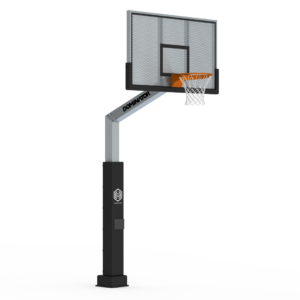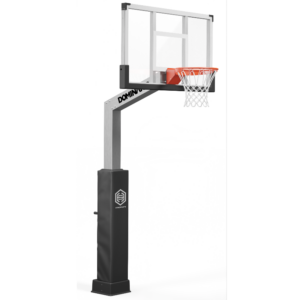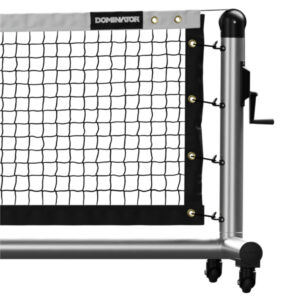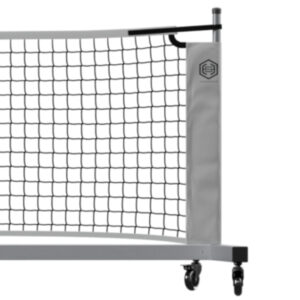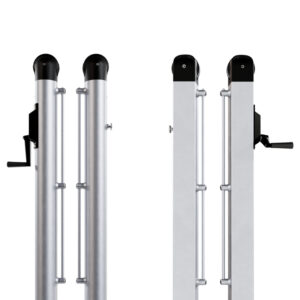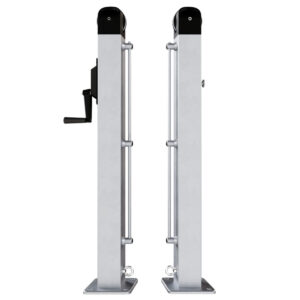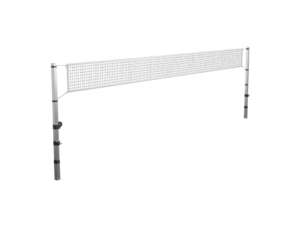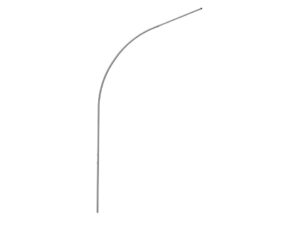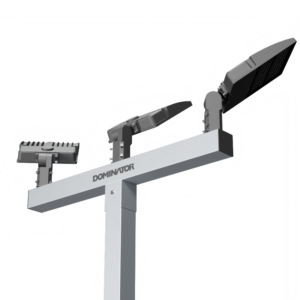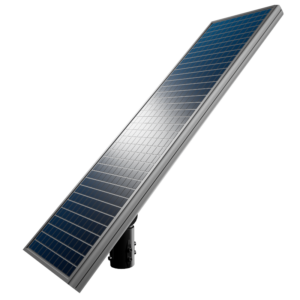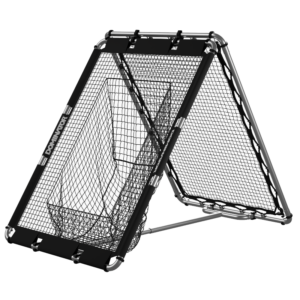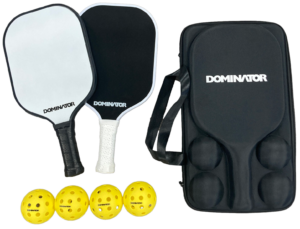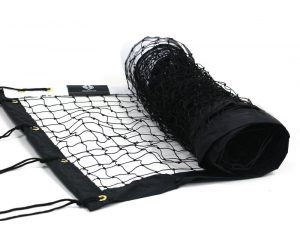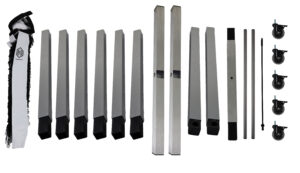Pickleball
How to Build a Pickleball Court: What You Need to Know
Pickleball is a sport whose popularity cannot be overstated. Figures show that “more than 36.5 million people played pickleball from August 2021 to August 2022.” The sport is inexpensive, requires minimal equipment, and is a great way to engage with friends and family.
If you’ve been inspired to take your practice sessions to a new level by installing a court, you’re in luck! We’ll take you through everything you need to know about how to build a pickleball court. We’ll talk about materials, types, installation costs, and maintenance. We’ll even discuss how you can build a pickleball court in your backyard.
1) Determine How Much Space You Need
The first step in installing a pickleball court is determining how much space you’ll need and what type of surface material you want. Figuring out this information is going to be critical to building a court suitable for all participants and convenient for the sport. To get started, consider the following:
Type of Surface
You can play pickleball on multiple surfaces, including clay, concrete, and asphalt. Each has its benefits. Ideally, you’ll want something that requires little maintenance and minimizes impact on a player’s body.
Also, consider how much you’re willing to spend on both construction and maintenance costs. As you’ll read later on, some surface materials require more maintenance than others.


Pickleball Court Dimensions
A standard pickleball court is 20 by 44 feet, which is about the same size as a doubled badminton court. The same length applies regardless of whether you’re playing singles or doubles. However, the exact dimensions will vary depending on how many courts you plan to build. A single court, on the other hand, should have the following measurements:
- Net Height: Your net should be 36 inches high at the sidelines and 34 inches in the middle.
- Pickleball Playing Area: The standard recommendation is 30 by 60 feet. The playing area will vary depending on whether or not it’s a standalone court. Don’t forget to consider the amount of space your players need to move around.

If you plan to build multiple courts, you’ll need larger dimensions and multiple fences with padding between each court. The padding helps minimize the buildup of mildew and fungus.
2) Select a Pickleball Court Surface Type
Let’s walk through each surface type and discuss the pros and cons of each.
Concrete
Pros: Concrete is durable and long-lasting. The material is firm and requires little maintenance. Because of its firm base, the ball bounces easily, making it a desirable choice for players.
Cons: Raw concrete can be problematic because it exerts extra force on a player’s body. Additionally, raw concrete material cracks easily. To avoid this concern, make sure you apply polyurethane for resistance against cracks.
Asphalt
Pros: Like concrete, asphalt is durable. Additionally, asphalt courts can easily cover large areas and are faster to build. If you’re building an outdoor court, asphalt is a popular choice because it can withstand harsh weather-related conditions and dry quickly.
Cons: They require more maintenance—you’ll need to be on top of maintenance to keep your court smooth. Plus, asphalt can inflict pain on your joints because of its hard surface, though it has more give than concrete.
Clay
Pros: Clay surface material is composed of a loose, crushed stone that makes it easier for your knees and feet to withstand force and impact. Clay also absorbs more moisture than heat, which means the surface stays cooler in warm weather.
Cons: Clay does have drawbacks, and ball performance is one of them. The bounces are irregular, so it is difficult to determine where the ball will go. Clay also requires more maintenance than other types.
3) Obtain the Necessary Tools and Equipment
After determining the proper dimensions and selecting the best surface type, it’s time to gather all your essentials. You’ll need to think about the right pickleball nets, perimeter fencing, and proper lighting to establish a pleasant playing atmosphere.
Pickleball Net
With the right pickleball net, you can easily divide your court and set proper parameters. Consider durable, rust-proof, water-resistant nets like our Dominator Rolling Portable Net. Installation is quick and easy!
Alternatively, you can opt for our hoop-to-light pickleball net. Not only do you get hardware that is stainless steel, but it is also water resistant, like our rolling portable net.
Finally, you’ll need separate posts so you can easily remove them. With our Heavy-Duty Inground Pickleball System, you get a lifetime warranty. Our offer also comes with a crank system that provides adjustable tension for your net.
Pickleball Lighting
As a recommendation, you’ll need a minimum of two light poles that can project 1,500 watts of energy for proper illumination. You also want poles that have a height of 18 feet.
LED light products are solid choices if you want energy-efficient sources that can supply sufficient illumination. Luckily, we offer different LED Dominator light products. Our lighting poles have a wall thickness of 0.187 inches.
The assembling process is pretty straightforward, and you can adjust the angle of your lighting to suit your illumination preferences.
Pickleball Fencing
While this is optional, a fence keeps your ball from rolling into unwanted areas. Make sure your fence reaches at least 10 feet to keep the ball in your court. For padded fence types, four feet should be enough.
4) Prepare Your Pickleball Court: 4 Steps
Here are the step-by-step basics of setting up your pickleball court:
- Select a location: Find a flat, level area with dimensions that are at least 20 feet by 44 feet—since the court itself needs to be this size, allow a little extra space for fencing and sidelines, if possible.
- Gather additional materials: Besides the ones we discussed earlier, you’ll need a measuring tape, chalk, and a ruler.
- Establish court dimensions: Use your tape and chalk to mark the exact length and width of your court. Draw lines that are parallel to the centerline on both sides, and make sure they are 15 by 10 feet on either side of the centerline
- Install your net and lay down the foundation of your court with your chosen material: Remember, your nets should be 36 inches above the ground and 34 inches in the middle.
Should You Build a Court Yourself or Hire a Contractor?
That depends. If you are highly skilled when it comes to building pickleball courts, you may be able to complete the process yourself.
It is worth noting that building a pickleball court is something you can do on your own. You will need the right tools and instructions to get started. Not to mention you’ll be saving a lot of money if you avoid professional help. However, if you are inexperienced, you could end up spending more money if something goes wrong.
A contractor can help you avoid unnecessary costs associated with equipment and materials. They also understand the structure and the layout process to build a durable court.
Should You Build a Court Yourself or Hire a Contractor?
That depends. If you are highly skilled when it comes to building pickleball courts, you may be able to complete the process yourself.
It is worth noting that building a pickleball court is something you can do on your own. You will need the right tools and instructions to get started. Not to mention you’ll be saving a lot of money if you avoid professional help. However, if you are inexperienced, you could end up spending more money if something goes wrong.
A contractor can help you avoid unnecessary costs associated with equipment and materials. They also understand the structure and the layout process to build a durable court.
Can You Build a Pickleball Court in Your Backyard?
If you’re wondering how to build a pickleball court in your backyard, here is what you do:
- Get the right equipment: Make sure you get paddles, nets, and balls, and follow the height recommendations we discussed in the previous section.
- Mark your lines: Use a tape measure to mark the exact dimensions you’ll need.
Install a fence: Keep your ball from going into your neighbor’s yard by installing a small fence around your court.
5) Maintain Your Pickleball Court
Your pickleball court requires regular maintenance and proper cleaning to prolong its longevity. Below are some recommendations to expect.
Cleaning
Check your court occasionally for any debris, dirt, or unwanted material that could present a problem or possibly pose a risk for injuries. Use a broom to sweep up any trash and leaves. You can also shorten the cleaning time by using a leaf blower.
Weather Protection
You’ll have to deal with occasional thunderstorms from time to time. Patch your surface if water puddles are deeper than 1/16 of an inch. If you live in an area susceptible to freezing conditions, examine any cracks since ice can exacerbate the problem.
Line, Net, and Post Maintenance
Use warm water and detergent to clean your lines, net, and court posts thoroughly. How can you tell if your lines are in good condition? Check for any fading or stains, and check your posts for mildew, rust, and corrosion.
How Much Does It Cost to Build a Pickleball Court?
There’s no exact figure for this question. To figure out exactly how much you’ll end up spending, you’ll have to account for several factors, including:
- Surface type
- Court size
- Materials
- Contractor costs
- Lighting and fencing
- Routine maintenance
- Site preparation
Expect to pay anywhere between $20,000 and $50,000 for a court. For optional features, such as fences, expect to pay anywhere from $2,000 to $6,000. This is just one of many factors you’ll have to consider when determining final costs of a pickleball court, so examine your options carefully.
Shop at Dominator for Pickleball Equipment
If you need help selecting the right equipment for your Pickleball court, Dominator has just what you need. Browse our pickleball products and find the right equipment to take your game to the next level!
